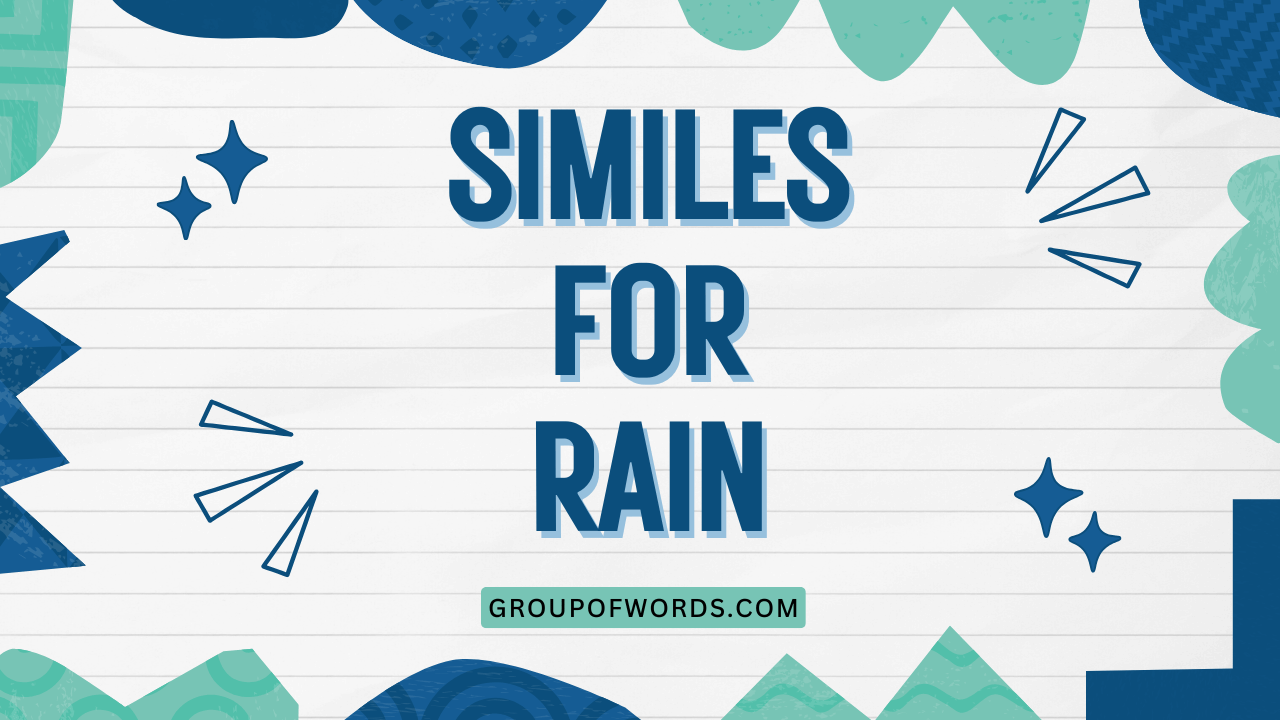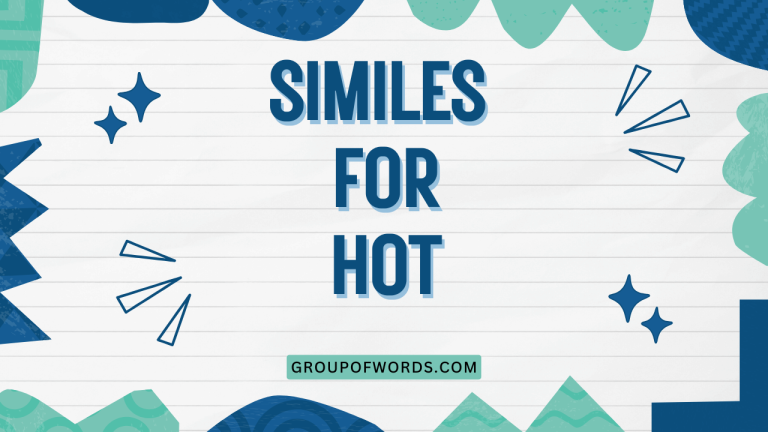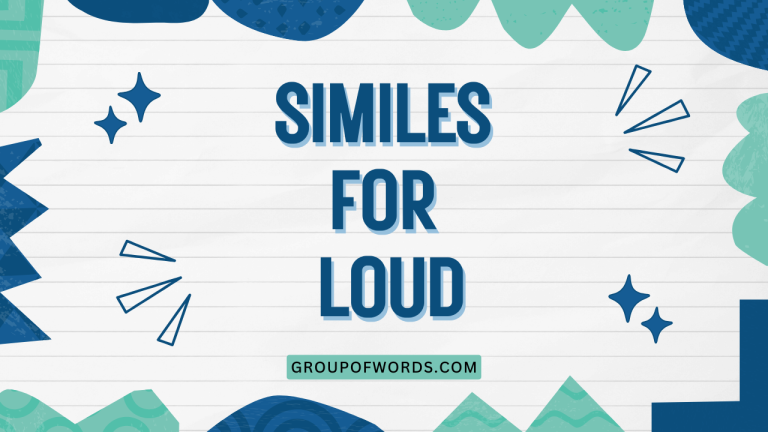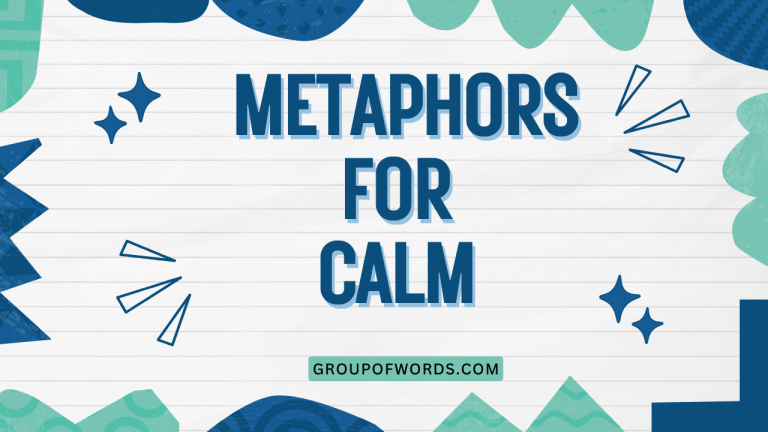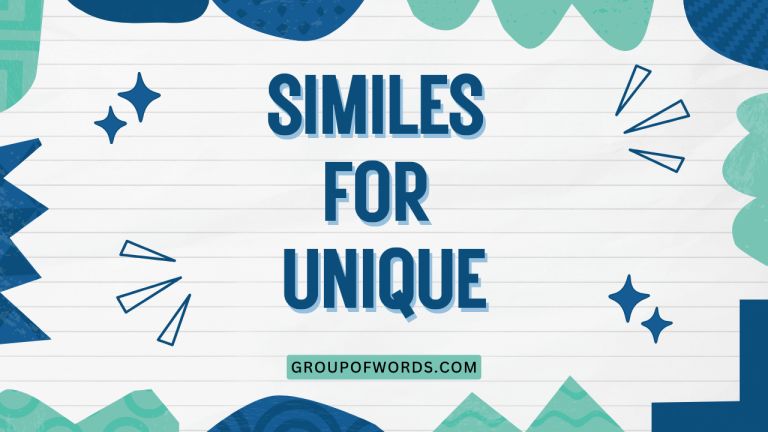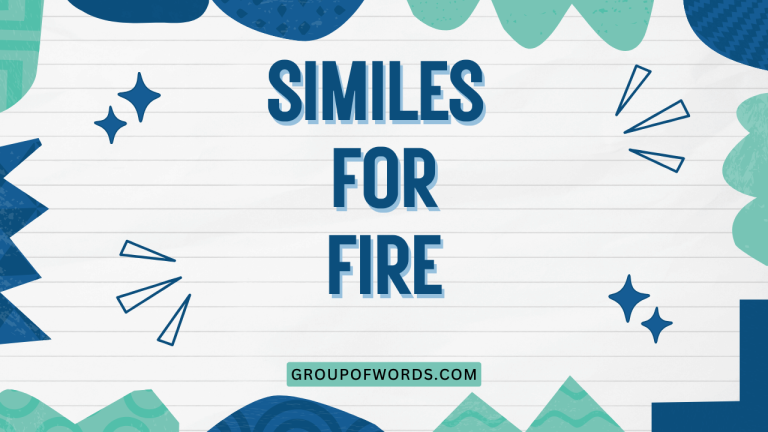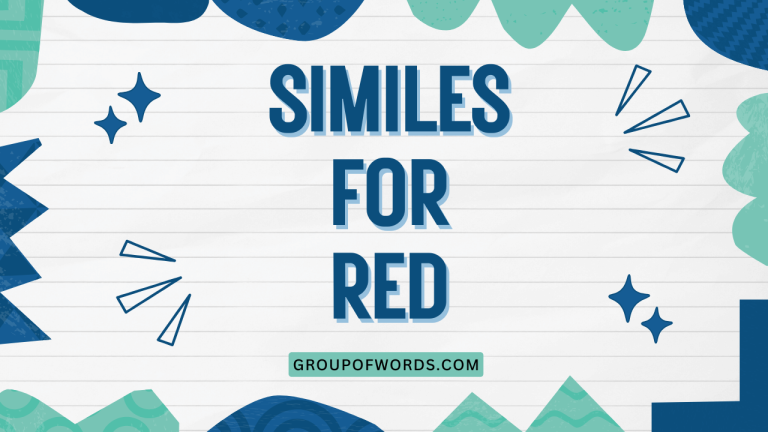Similes for Rain: A Comprehensive Guide
Understanding and using similes effectively can dramatically enhance your writing and communication skills. Similes, by comparing one thing to another, add depth, imagery, and vividness to descriptions.
This article focuses specifically on similes for rain, exploring their various forms, meanings, and applications. Whether you’re a student, writer, or language enthusiast, this guide will equip you with the knowledge and tools to use rain similes with confidence and creativity.
Table of Contents
- Introduction
- Definition of Simile
- Structural Breakdown of Similes
- Types of Rain Similes
- Examples of Rain Similes
- Usage Rules for Similes
- Common Mistakes with Similes
- Practice Exercises
- Advanced Topics: Metaphors vs. Similes
- Frequently Asked Questions (FAQ)
- Conclusion
Definition of Simile
A simile is a figure of speech that directly compares two different things using the words “like” or “as.” The purpose of a simile is to create a vivid image or to emphasize a particular quality of one thing by associating it with something else that shares a similar characteristic. Similes are essential tools in descriptive writing and poetry, enriching language and making it more engaging.
Similes fall under the broader category of figurative language, which also includes metaphors, personification, and hyperbole. While metaphors state that something *is* something else, similes only suggest a resemblance or similarity.
This distinction is crucial in understanding how similes function to enhance meaning.
Consider the example, “The rain fell like tears.” This simile compares the falling rain to tears, suggesting a sense of sadness or cleansing. The word “like” explicitly signals the comparison, making it a simile rather than a metaphor.
Understanding this fundamental structure is key to crafting and interpreting similes effectively.
Structural Breakdown of Similes
The basic structure of a simile consists of three main parts: the subject, the linking word (“like” or “as”), and the object of comparison. The subject is the thing being described, the linking word establishes the comparison, and the object of comparison is the thing the subject is being compared to.
Identifying these components is essential for understanding and constructing similes.
For example, in the simile “The rain was as cold as ice,” “rain” is the subject, “as” is the linking word, and “ice” is the object of comparison. This structure highlights the coldness of the rain by associating it with the well-known coldness of ice.
Recognizing these elements allows you to appreciate the intended effect and meaning of the simile.
Similes can also be more complex, incorporating additional descriptive words or phrases. For instance, “The rain fell like a curtain of silver beads” expands on the basic structure by adding descriptive details that enhance the image.
The core structure remains the same, but the added elements contribute to a richer and more evocative comparison.
Types of Rain Similes
Rain similes can be categorized based on the specific qualities of rain they describe. These categories include similes for light rain, heavy rain, gentle rain, stormy rain, and constant rain.
Each category evokes a different image and conveys a distinct feeling or atmosphere.
Similes for Light Rain
Light rain similes often describe a delicate, almost imperceptible drizzle. They evoke a sense of peace, tranquility, or gentle cleansing.
Words like “mist,” “dew,” and “tears” are frequently used in these similes to convey the subtle nature of the rainfall.
Similes for Heavy Rain
Heavy rain similes, on the other hand, depict a downpour or deluge. They often suggest intensity, force, or even chaos.
Words like “buckets,” “sheets,” and “waterfall” are common in these similes, emphasizing the volume and power of the rain.
Similes for Gentle Rain
Gentle rain similes capture the soothing and calming aspects of rain. They evoke feelings of relaxation, comfort, and renewal.
Words like “whisper,” “kiss,” and “balm” are often used to convey the soft and tender nature of the rainfall.
Similes for Stormy Rain
Stormy rain similes portray rain accompanied by thunder, lightning, and wind. They suggest turbulence, drama, and raw power.
Words like “fury,” “rage,” and “onslaught” are commonly used to emphasize the intensity and destructive potential of the storm.
Similes for Constant Rain
Constant rain similes describe rain that continues for an extended period, often creating a sense of monotony or dreariness. They evoke feelings of persistence, endurance, or even melancholy.
Words like “drumbeat,” “ticking clock,” and “gray curtain” are often used to convey the relentless nature of the rainfall.
Examples of Rain Similes
The following sections provide extensive examples of rain similes, categorized by the type of rain they describe. Each example is designed to illustrate the diverse ways in which similes can be used to enhance descriptive writing and convey specific emotions or atmospheres.
Examples of Light Rain Similes
Light rain similes often evoke feelings of calmness and peace. The following table provides numerous examples of similes that describe light rain.
| Simile | Explanation |
|---|---|
| The rain fell like a soft mist. | Describes a gentle, barely perceptible rain. |
| The rain was as fine as powder. | Emphasizes the delicate nature of the rain. |
| The drizzle was like a veil over the city. | Suggests a light, obscuring rain. |
| The rain kissed the leaves like a lover’s touch. | Conveys a gentle and affectionate image. |
| The rain was as light as a feather. | Highlights the weightlessness of the rain. |
| The rain fell like tears from the sky. | Evokes a sense of sadness or cleansing. |
| The raindrops were like tiny diamonds. | Emphasizes the beauty and clarity of the rain. |
| The rain was as gentle as a whisper. | Conveys a soft and quiet image. |
| The rain fell like a gentle shower of blessings. | Suggests a positive and nurturing effect. |
| The rain was as delicate as lace. | Highlights the intricate and fine nature of the rain. |
| The rain fell like morning dew. | Suggests freshness and new beginnings. |
| The rain was as soft as a sigh. | Conveys a feeling of relief and gentleness. |
| The rain fell like a sprinkle of stardust. | Evokes a magical and ethereal image. |
| The rain was as light as breath on a mirror. | Emphasizes the fleeting and subtle nature of the rain. |
| The rain fell like a curtain of gauze. | Suggests a thin and translucent rain. |
| The rain was as subtle as a ghost’s touch. | Conveys a barely perceptible sensation. |
| The rain fell like a gentle caress. | Suggests a tender and loving touch. |
| The rain was as fine as spun sugar. | Highlights the delicate and sweet nature of the rain. |
| The rain fell like a whisper in the trees. | Evokes a quiet and peaceful image. |
| The rain was as fleeting as a memory. | Emphasizes the short-lived nature of the rain. |
| The rain fell like a dusting of powdered sugar. | Suggests a light and sweet covering. |
| The rain was as soft as a baby’s skin. | Conveys a gentle and delicate touch. |
| The rain fell like a veil of tears. | Evokes a sense of sadness or cleansing. |
| The rain was as light as a butterfly’s wing. | Highlights the weightlessness and delicacy of the rain. |
| The rain fell like a gentle lullaby. | Suggests a calming and soothing effect. |
| The rain was as subtle as a secret. | Conveys a quiet and understated image. |
| The rain fell like a silent blessing. | Suggests a positive and peaceful influence. |
| The rain was as light as a summer breeze. | Emphasizes the gentle and refreshing nature of the rain. |
| The rain fell like a soft, comforting blanket. | Suggests a sense of warmth and security. |
Examples of Heavy Rain Similes
Heavy rain similes often convey a sense of intensity and force. The following table provides numerous examples of similes that describe heavy rain.
| Simile | Explanation |
|---|---|
| The rain fell like buckets being emptied from the sky. | Emphasizes the large volume of rain. |
| The rain was as heavy as a waterfall. | Highlights the sheer force and volume of the rain. |
| The rain came down like sheets. | Suggests a continuous and impenetrable downpour. |
| The rain pounded the roof like a drum solo. | Conveys the loud and rhythmic sound of the rain. |
| The rain was as relentless as a storm at sea. | Highlights the persistent and unforgiving nature of the rain. |
| The rain fell like a torrent of water. | Emphasizes the rapid and powerful flow of the rain. |
| The rain was as thick as pea soup. | Suggests a dense and heavy downpour. |
| The rain lashed against the windows like an angry sea. | Conveys the violent and forceful impact of the rain. |
| The rain fell like a deluge from the heavens. | Emphasizes the overwhelming and catastrophic nature of the rain. |
| The rain was as unforgiving as a desert storm. | Highlights the harsh and relentless nature of the rain. |
| The rain fell like a curtain of iron. | Suggests a heavy and impenetrable barrier. |
| The rain was as intense as a tropical monsoon. | Conveys the extreme and powerful nature of the rain. |
| The rain pounded the earth like a thousand hammers. | Emphasizes the forceful and repetitive impact of the rain. |
| The rain was as fierce as a lion’s roar. | Highlights the powerful and intimidating nature of the rain. |
| The rain fell like a river from the sky. | Suggests a continuous and abundant flow of water. |
| The rain was as overwhelming as a tidal wave. | Conveys the immense and destructive power of the rain. |
| The rain beat down like a merciless judge. | Emphasizes the harsh and unforgiving nature of the rain. |
| The rain was as violent as a hurricane’s fury. | Highlights the extreme and destructive force of the rain. |
| The rain fell like a waterfall from a broken dam. | Suggests an uncontrolled and overwhelming flow of water. |
| The rain was as relentless as the march of time. | Conveys the persistent and unstoppable nature of the rain. |
| The rain poured down like liquid lead. | Emphasizes the heavy and oppressive nature of the rain. |
| The rain was as deafening as a thunderclap. | Highlights the loud and overwhelming sound of the rain. |
| The rain fell like a cascade of tears from the clouds. | Evokes a sense of sadness and overwhelming emotion. |
| The rain was as forceful as a firehose. | Conveys the powerful and direct impact of the rain. |
| The rain hammered the ground like angry fists. | Emphasizes the violent and aggressive nature of the rain. |
| The rain was as torrential as a flash flood. | Highlights the sudden and destructive power of the rain. |
| The rain fell like a barrage of stones. | Suggests a relentless and painful impact. |
| The rain was as unstoppable as a runaway train. | Conveys the overwhelming and uncontrollable nature of the rain. |
| The rain poured down like a waterfall of grief. | Evokes a sense of intense sorrow and despair. |
| The rain was as fierce as a dragon’s breath. | Highlights the powerful and destructive force of the rain. |
Examples of Gentle Rain Similes
Gentle rain similes often evoke a sense of peace and tranquility. The following table provides numerous examples of similes that describe gentle rain.
| Simile | Explanation |
|---|---|
| The rain fell like a gentle kiss on the skin. | Emphasizes the soft and tender nature of the rain. |
| The rain was as soothing as a lullaby. | Highlights the calming and relaxing effect of the rain. |
| The rain whispered through the trees like a secret. | Suggests a quiet and intimate presence. |
| The rain felt like a soft balm on a weary soul. | Conveys a sense of healing and comfort. |
| The rain was as refreshing as a cool drink on a hot day. | Highlights the revitalizing and invigorating effect of the rain. |
| The rain fell like a gentle caress from the sky. | Emphasizes the tender and loving nature of the rain. |
| The rain was as comforting as a warm embrace. | Suggests a sense of security and reassurance. |
| The rain danced on the rooftops like playful spirits. | Conveys a light and joyful image. |
| The rain fell like a soft blanket of peace. | Emphasizes the calming and serene effect of the rain. |
| The rain was as gentle as a mother’s touch. | Highlights the nurturing and caring nature of the rain. |
| The rain trickled down the window like tears of joy. | Evokes a sense of happiness and relief. |
| The rain was as soothing as a gentle breeze. | Suggests a calming and refreshing sensation. |
| The rain fell like a soft shower of blessings. | Emphasizes the positive and nurturing effect of the rain. |
| The rain was as delicate as a flower petal. | Highlights the fragile and beautiful nature of the rain. |
| The rain pattered on the leaves like a gentle applause. | Conveys a light and appreciative sound. |
| The rain was as calming as a quiet meditation. | Suggests a sense of inner peace and tranquility. |
| The rain fell like a soft curtain of serenity. | Emphasizes the peaceful and undisturbed nature of the rain. |
| The rain was as gentle as a lamb’s wool. | Highlights the soft and comforting texture of the rain. |
| The rain dripped from the eaves like a slow, sweet melody. | Conveys a soothing and harmonious sound. |
| The rain was as refreshing as a dip in a cool stream. | Suggests a revitalizing and invigorating sensation. |
| The rain fell like a gentle mist of forgiveness. | Emphasizes the cleansing and restorative effect of the rain. |
| The rain was as comforting as a cup of hot tea. | Suggests a sense of warmth and relaxation. |
| The rain cleansed the earth like a gentle baptism. | Emphasizes the purifying and renewing nature of the rain. |
| The rain was as tender as a lover’s embrace. | Highlights the affectionate and caring nature of the rain. |
| The rain fell like a soft cascade of calm. | Conveys a sense of peace and tranquility. |
| The rain was as gentle as a feather’s descent. | Highlights the light and graceful nature of the rain. |
| The rain soothed the land like a mother’s lullaby. | Emphasizes the calming and comforting effect of the rain. |
| The rain was as soft as a cloud’s embrace. | Suggests a gentle and comforting sensation. |
| The rain fell like a quiet symphony of nature. | Conveys a harmonious and peaceful sound. |
Examples of Stormy Rain Similes
Stormy rain similes often convey a sense of power and chaos. The following table provides numerous examples of similes that describe stormy rain.
| Simile | Explanation |
|---|---|
| The rain fell like a furious onslaught from the heavens. | Emphasizes the aggressive and forceful nature of the rain. |
| The rain was as violent as a raging tempest. | Highlights the extreme and destructive force of the rain. |
| The rain lashed against the buildings like an angry beast. | Conveys the wild and untamed nature of the storm. |
| The rain roared like a hungry lion. | Emphasizes the loud and intimidating sound of the storm. |
| The rain was as relentless as a battlefield. | Highlights the persistent and unforgiving nature of the storm. |
| The rain fell like a barrage of artillery fire. | Suggests a continuous and overwhelming assault. |
| The rain was as chaotic as a war zone. | Conveys the disarray and disorder of the storm. |
| The rain crashed down like a collapsing building. | Emphasizes the destructive and overwhelming force of the rain. |
| The rain was as fierce as a dragon’s breath. | Highlights the powerful and destructive nature of the storm. |
| The rain descended like a curtain of doom. | Suggests a sense of impending disaster. |
| The rain was as turbulent as a stormy sea. | Conveys the chaotic and unpredictable nature of the storm. |
| The rain pounded the earth like a giant’s fist. | Emphasizes the forceful and destructive impact of the rain. |
| The rain was as unforgiving as a judge’s gavel. | Highlights the harsh and relentless nature of the storm. |
| The rain fell like a torrent of tears from a grieving sky. | Evokes a sense of overwhelming sadness and despair. |
| The rain was as deafening as a thousand drums. | Conveys the loud and overwhelming sound of the storm. |
| The rain swept through the town like an invading army. | Emphasizes the destructive and overwhelming force of the storm. |
| The rain was as relentless as a ticking time bomb. | Highlights the sense of impending danger and inevitability. |
| The rain fell like a waterfall of fury. | Emphasizes the intense and uncontrolled nature of the storm. |
| The rain was as chaotic as a shattered mirror. | Conveys the fragmented and disordered nature of the storm. |
| The rain lashed down like the whips of an angry god. | Suggests a sense of divine punishment and wrath. |
| The rain was as violent as a volcanic eruption. | Highlights the explosive and destructive force of the storm. |
| The rain poured down like a river of despair. | Evokes a sense of overwhelming sadness and hopelessness. |
| The rain was as relentless as a pursuing nightmare. | Conveys the sense of fear and inevitability. |
| The rain fell like a cascade of shattered dreams. | Emphasizes the destructive and disheartening nature of the storm. |
| The rain was as unforgiving as a frozen wasteland. | Highlights the harsh and desolate nature of the storm. |
| The rain raged like a wildfire out of control. | Emphasizes the destructive and uncontrollable nature of the storm. |
| The rain was as overwhelming as a collapsing universe. | Conveys the immense and catastrophic scale of the storm. |
| The rain fell like a tempest of tears and sorrow. | Evokes a sense of profound sadness and overwhelming grief. |
Examples of Constant Rain Similes
Constant rain similes often convey a sense of monotony and persistence. The following table provides numerous examples of similes that describe constant rain.
| Simile | Explanation |
|---|---|
| The rain fell like a persistent drumbeat on the roof. | Emphasizes the rhythmic and repetitive nature of the rain. |
| The rain was as constant as the ticking of a clock. | Highlights the continuous and unwavering nature of the rain. |
| The rain hung in the air like a gray curtain. | Suggests a dull and oppressive atmosphere. |
| The rain dripped from the trees like a leaky faucet. | Conveys a sense of unending and slightly irritating persistence. |
| The rain was as relentless as the ebb and flow of the tide. | Highlights the continuous and unstoppable nature of the rain. |
| The rain fell like a never-ending stream of tears. | Evokes a sense of prolonged sadness and melancholy. |
| The rain was as monotonous as a broken record. | Suggests a repetitive and uninteresting quality. |
| The rain continued like a somber, unending song. | Conveys a sense of prolonged and slightly depressing atmosphere. |
| The rain was as persistent as a nagging thought. | Highlights the constant and intrusive nature of the rain. |
| The rain fell like a slow, steady leak in the sky. | Emphasizes the continuous and gradual nature of the rain. |
| The rain was as unwavering as a soldier’s resolve. | Suggests a persistent and determined quality. |
| The rain droned on like a long, boring lecture. | Conveys a sense of tedium and monotony. |
| The rain was as constant as the rhythm of a heartbeat. | Highlights the continuous and essential nature of the rain. |
| The rain fell like a perpetual cycle of sorrow. | Evokes a sense of unending sadness and grief. |
| The rain was as predictable as the rising of the sun. | Suggests a reliable and constant occurrence. |
| The rain lingered like a persistent ghost. | Conveys a sense of lingering and inescapable presence. |
| The rain fell like a tireless waterfall of tears. | Emphasizes the unending and sorrowful nature of the rain. |
| The rain was as steady as a ship sailing on calm waters. | Suggests a continuous and unwavering course. |
| The rain continued like a story that never ends. | Conveys the sense of a prolonged and ongoing event. |
| The rain was as constant as background noise. | Highlights the ever-present and often unnoticed nature of the rain. |
| The rain fell like a ceaseless stream of memories. | Evokes a sense of unending reflection and remembrance. |
| The rain was as predictable as the changing of the seasons. | Suggests a cyclical and inevitable occurrence. |
| The rain lingered like an unwelcome guest. | Conveys a sense of unwanted and prolonged presence. |
| The rain fell like a continuous whisper of secrets. | Emphasizes the unending and mysterious nature of the rain. |
| The rain was as steady as a heartbeat in the night. | Highlights the continuous and essential nature of the rain. |
| The rain continued like a story that refuses to end. | Conveys the sense of a prolonged and ongoing event. |
| The rain was as constant as the turning of the earth. | Suggests a reliable and unstoppable force. |
| The rain lingered like a heavy cloud of sadness. | Conveys a sense of prolonged and oppressive melancholy. |
Usage Rules for Similes
Using similes effectively involves adhering to certain rules to ensure clarity and impact. The most important rule is to ensure that the comparison is logical and meaningful.
The two things being compared should share a common characteristic that is relevant to the description.
For example, saying “The rain was as loud as a whisper” would be illogical because whispers are typically quiet, not loud. A more appropriate simile might be “The rain was as loud as a drum,” which effectively conveys the intensity of the sound.
Another important rule is to avoid clichés. Overused similes, such as “as busy as a bee” or “as strong as an ox,” can make your writing sound unoriginal and predictable.
Strive to create fresh and imaginative comparisons that will capture the reader’s attention.
Finally, be mindful of the context and audience when using similes. A simile that is appropriate in one situation may not be suitable in another.
Consider the tone of your writing and the knowledge level of your audience when choosing or crafting similes.
Common Mistakes with Similes
Several common mistakes can detract from the effectiveness of similes. One frequent error is confusing similes with metaphors.
Remember that similes use “like” or “as” to make a comparison, while metaphors state that something *is* something else.
Incorrect: The rain was a curtain. (This is a metaphor.)
Correct: The rain was like a curtain. (This is a simile.)
Another common mistake is using weak or illogical comparisons. The comparison should be clear and relevant.
Avoid comparisons that are too vague or that don’t make sense in the given context.
Incorrect: The rain was as blue as happiness.
Correct: The rain was as cold as ice.
Overusing similes can also diminish their impact. Use similes sparingly and strategically to enhance your writing, rather than cluttering it with unnecessary comparisons.
Practice Exercises
The following exercises will help you practice identifying, completing, and creating rain similes. Each exercise is designed to reinforce your understanding of the concepts discussed in this article.
Exercise 1: Identifying Rain Similes
Identify the similes in the following sentences:
| Question | Answer |
|---|---|
| 1. The rain fell like confetti. | The rain fell like confetti. |
| 2. The storm was a monster. | (No simile present – this is a metaphor). |
| 3. The rain was as cold as the grave. | The rain was as cold as the grave. |
| 4. The flood was devastating. | (No simile present). |
| 5. The rain pattered like tiny feet. | The rain pattered like tiny feet. |
| 6. The clouds were angry gods. | (No simile present – this is a metaphor). |
| 7. The rain was as soothing as a song. | The rain was as soothing as a song. |
| 8. The wind howled. | (No simile present). |
| 9. The rain poured like a waterfall. | The rain poured like a waterfall. |
| 10. The lightning was a whip. | (No simile present – this is a metaphor). |
Exercise 2: Completing Rain Similes
Complete the following rain similes with appropriate endings:
| Question | Answer |
|---|---|
| 1. The rain fell like _____. | The rain fell like tears. |
| 2. The rain was as heavy as _____. | The rain was as heavy as a waterfall. |
| 3. The gentle rain felt like _____. | The gentle rain felt like a kiss. |
| 4. The stormy rain sounded like _____. | The stormy rain sounded like thunder. |
| 5. The constant rain was as dull as _____. | The constant rain was as dull as a gray day. |
| 6. The drizzle was as fine as _____. | The drizzle was as fine as mist. |
| 7. The rain poured down like _____. | The rain poured down like buckets. |
| 8. The soft rain was as light as _____. | The soft rain was as light as a
feather. |
Exercise 3: Creating Your Own Rain Similes
Create your own similes for the following types of rain:
- Light Rain: The rain fell like…
- Heavy Rain: The rain was as intense as…
- Gentle Rain: The rain felt like…
- Stormy Rain: The rain sounded like…
- Constant Rain: The rain was as relentless as…
Advanced Topics: Metaphors vs. Similes
While both similes and metaphors are figures of speech that make comparisons, they do so in different ways. A simile states that something is like or as something else, while a metaphor states that something is something else. This distinction is crucial for understanding the nuances of figurative language.
Consider the example, “The rain is a weeping sky.” This is a metaphor because it directly equates the rain to a weeping sky. In contrast, “The rain is like a weeping sky” is a simile because it uses “like” to suggest a resemblance rather than a direct equivalence.
Metaphors often create a more powerful and direct image, while similes provide a more subtle and nuanced comparison. Both devices can be effective in descriptive writing, but it’s important to choose the one that best suits the intended effect.
Frequently Asked Questions (FAQ)
What is the main purpose of using similes for rain?
The main purpose is to enhance descriptive writing by creating vivid images and conveying specific emotions or atmospheres associated with different types of rain. Similes make descriptions more engaging and help readers connect with the text on a sensory level.
How can I avoid using clichés in my rain similes?
To avoid clichés, strive to create original and imaginative comparisons. Think about unique qualities of rain and what other things share those qualities.
Use specific and descriptive language to make your similes stand out.
Can a simile be too complex?
Yes, a simile can be too complex if it becomes confusing or difficult to understand. The comparison should be clear and straightforward.
Avoid adding too many unnecessary details that could obscure the intended meaning.
Is it okay to mix similes and metaphors in my writing?
Yes, it is perfectly acceptable to mix similes and metaphors in your writing, as long as each figure of speech is used effectively and appropriately. Mixing them can add variety and depth to your descriptions.
How do I choose the right simile for a particular type of rain?
Consider the specific qualities of the rain you want to describe. Is it light and gentle, heavy and forceful, or constant and monotonous?
Choose a simile that accurately reflects those qualities and evokes the desired emotion or atmosphere.
Conclusion
Mastering the art of using similes for rain can significantly enhance your writing and communication skills. By understanding the structure, types, and usage rules of rain similes, you can create vivid and engaging descriptions that capture the reader’s attention.
Whether you’re writing poetry, fiction, or non-fiction, the ability to craft effective similes will make your writing more compelling and memorable. Practice the exercises provided in this article, and continue to explore the creative possibilities of figurative language.
